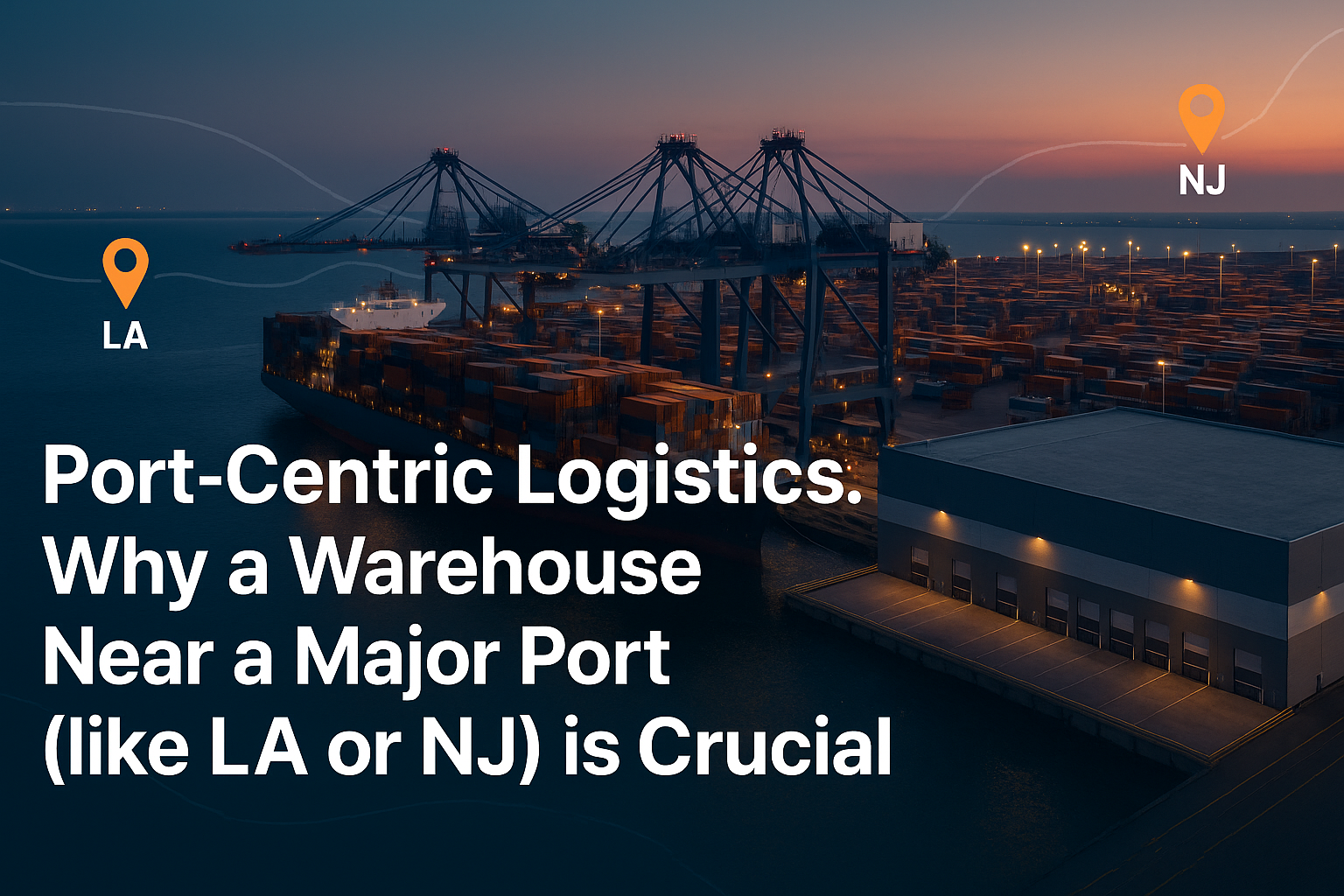You might be asking, “Why is a warehouse location so important?” The simple answer is proximity. The more you can consolidate and streamline your supply chain, the more efficient and cost-effective your operations become. A warehouse strategically located near a major port, such as the Port of Los Angeles (LA) or the Port of New Jersey, isn’t just a location; it’s a competitive advantage.
The Port-Centric Advantage: Unlocking Efficiency and Cost Savings
At its core, port-centric logistics is about minimizing the distance and time between a container arriving at a port and the goods reaching their final destination or a fulfillment center. Instead of trucking goods hundreds or thousands of miles inland, you can offload, sort, and process them just a few miles from the docks. This might sound like a minor detail, but its ripple effect on your entire supply chain is profound.
Reduced Drayage and Transportation Costs
The first and most significant benefit is the dramatic reduction in drayage and long-haul transportation costs. Drayage refers to the short-haul transport of goods from a port to a nearby facility. When your warehouse is just a few miles away, these costs are minimal. Compare this to the alternative: a shipment arriving in LA only to be trucked to a warehouse in the Midwest or East Coast. This adds not only significant fuel and labor costs but also exposure to market rate volatility.
Case Study: The West Coast Importer
Consider a hypothetical e-commerce brand, “Global Gear,” that imports electronics from Asia. They have two options:
- Option A (Inland Warehouse): Shipments arrive at the Port of LA and are immediately loaded onto trucks for a cross-country trip to a warehouse in Texas.
- Option B (Port-Centric Warehouse): Shipments arrive at the Port of LA and are delivered to a nearby California fulfillment warehouse just 10 miles away.
In Option A, Global Gear faces a 1,500+ mile journey, which can take days, incur substantial fuel surcharges, and is highly susceptible to driver shortages and road congestion. In Option B, the drayage is quick and cost-effective, allowing goods to be processed and ready for distribution much faster. This simple strategic choice could save them tens of thousands of dollars annually in transport fees alone.
Faster Delivery Times for Your Customers
In the age of Amazon Prime, customer expectations for fast shipping are higher than ever. Port-centric logistics directly translates to a faster supply chain. By processing goods immediately upon arrival, you can get products into your fulfillment network and on their way to customers more quickly. This is especially critical for brands with a high concentration of customers on the same coast as the entry port.
A port-centric strategy combined with a nationwide network of fulfillment centers, like those offered by WarehouseTX, creates a powerful bi-coastal advantage. Goods arriving on the West Coast can quickly be fulfilled for customers in California, while a portion is distributed efficiently to a warehouse in New Jersey to serve the East Coast market. This multi-node approach minimizes shipping zones and reduces transit times for a vast majority of the population.
“The strategic location of our warehouses near major ports allows us to slash drayage costs by up to 40% and get products to our customers days faster than our competitors.”
Increased Supply Chain Control and Visibility
When your goods are sitting on a truck for days, visibility can be a challenge. A port-centric model gives you greater control over your inventory from the moment it clears customs. With a nearby warehouse, you can perform immediate quality control checks, sort inventory, and prepare it for distribution or long-term storage. This proactive approach helps you identify and resolve issues early, preventing costly delays down the line.
Moreover, modern logistics partners provide real-time inventory tracking, giving you a comprehensive view of your stock levels, no matter where they are in the supply chain. This is crucial for accurate demand forecasting and avoiding stockouts.
—
Port-Centric vs. Inland Logistics: A Comparative Analysis
To fully appreciate the benefits, let’s break down the key differences between the two models in a head-to-head comparison.
| Feature | Port-Centric Logistics | Inland Logistics |
|---|---|---|
| Cost Efficiency | High. Significantly lower drayage and long-haul transportation costs. | Low. High transportation costs due to long-distance trucking. |
| Speed to Market | Very Fast. Immediate processing and quicker distribution. | Slower. Delays due to extended trucking times from port to warehouse. |
| Supply Chain Risk | Lower. Reduced exposure to trucking shortages, fuel price volatility, and traffic delays. | Higher. Increased risk from unforeseen road issues and trucking industry fluctuations. |
| Inventory Control | Excellent. Immediate access for quality control and processing. | Delayed. Goods are in transit for days, delaying checks and processing. |
| Customer Experience | Superior. Faster delivery times and reduced shipping costs can be passed on. | Sub-optimal. Slower delivery often leads to higher customer dissatisfaction. |
—
Common Questions About Port-Centric Logistics
What is the difference between drayage and trucking?
Drayage is a specific term for the short-haul transport of goods, typically from a seaport, airport, or rail terminal to a local warehouse or distribution center. Trucking is a broader term that includes long-haul, inter-city, and cross-country transportation. Port-centric logistics aims to minimize the need for long-haul trucking by using a nearby warehouse for immediate processing.
Does a port-centric strategy only work for West Coast imports?
Not at all. While the Port of Los Angeles is a major entry point for Asian goods, the strategy is equally effective for goods entering the U.S. from other regions. For example, a warehouse near the Port of New Jersey is crucial for brands importing from Europe and South America, allowing them to efficiently serve the large consumer base on the East Coast.
How do I choose the right port-centric logistics partner?
Look for a partner with proven experience and a strong network. Key factors to consider include proximity to major ports, advanced technology for real-time inventory tracking, and a comprehensive suite of services, including warehouse and storage, fulfillment services, and return management. A partner that also offers nationwide fulfillment can help you create a robust, multi-node network.
Final Thoughts: The Strategic Imperative
The global supply chain is more complex and competitive than ever. For e-commerce businesses that want to grow, thrive, and exceed customer expectations, a passive approach to logistics is no longer enough. Adopting a port-centric logistics strategy is not just about choosing a warehouse location; it’s about making a strategic decision to optimize your entire operation from end to end. By partnering with an experienced logistics provider, you can turn a logistical challenge into a powerful competitive advantage, ensuring your products are always where they need to be, precisely when they need to be there.

